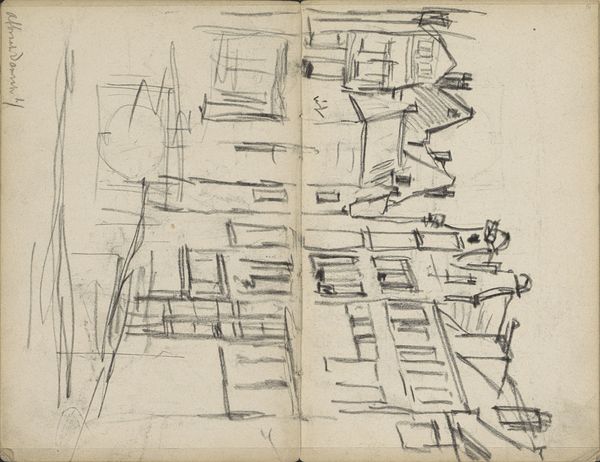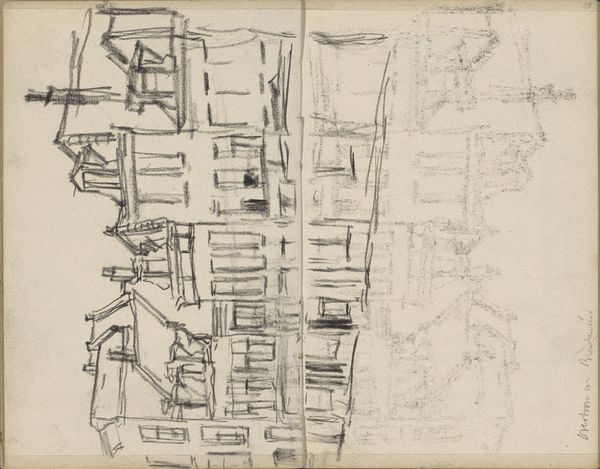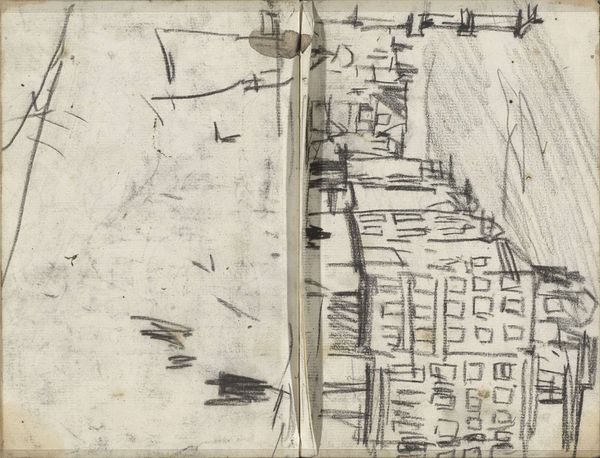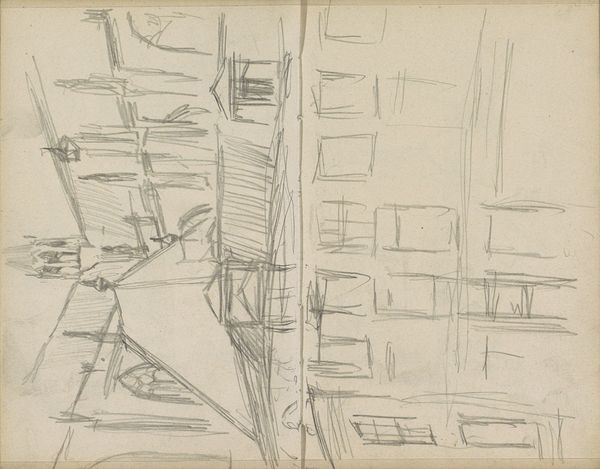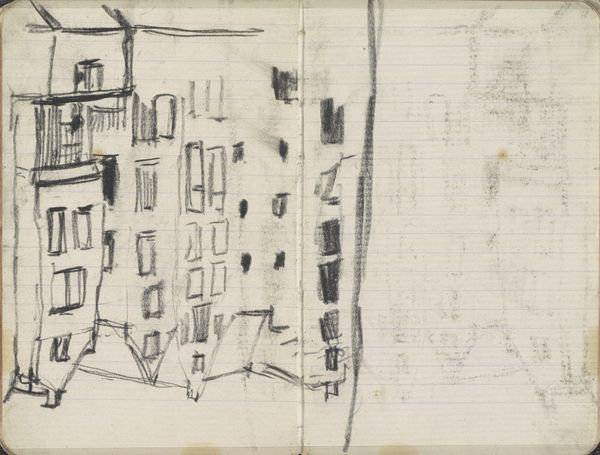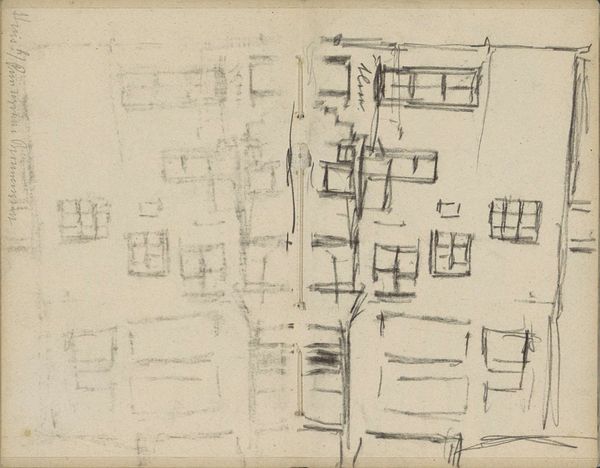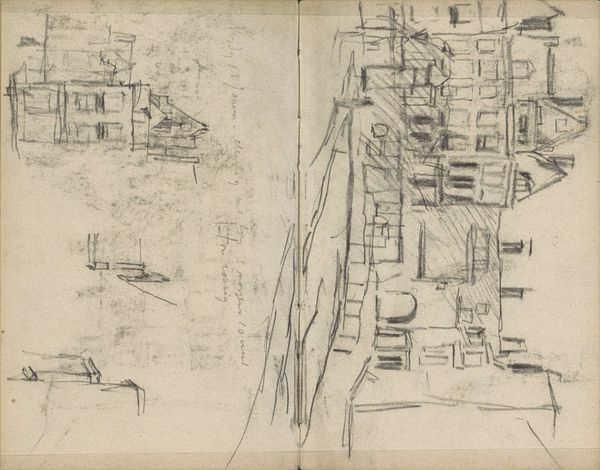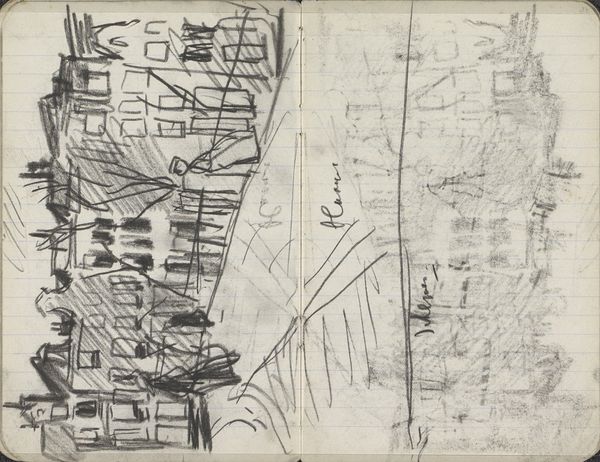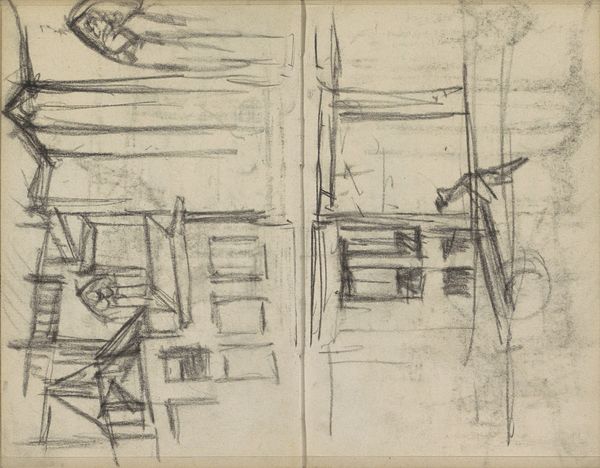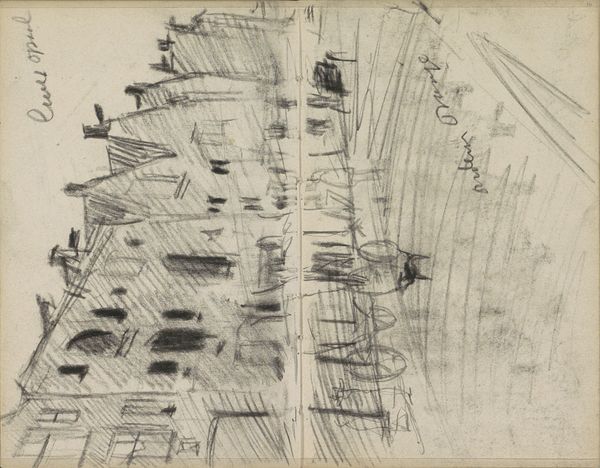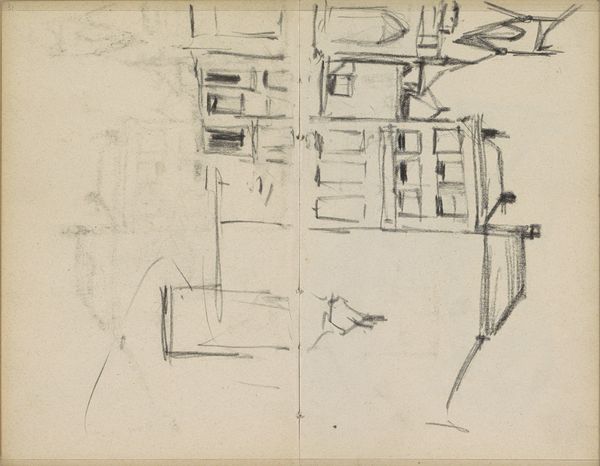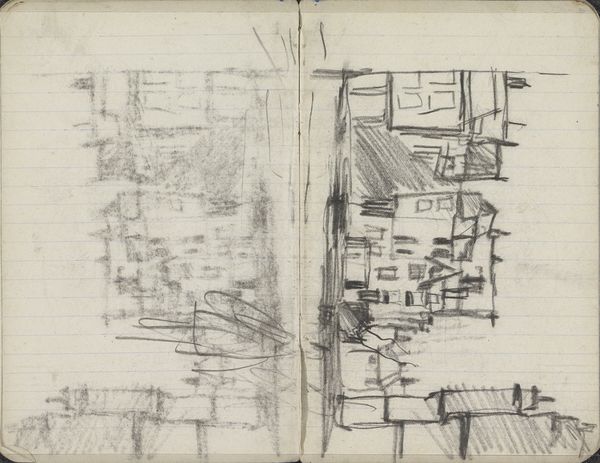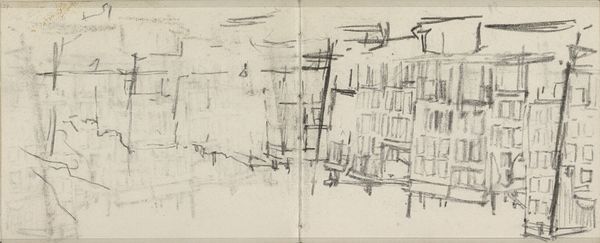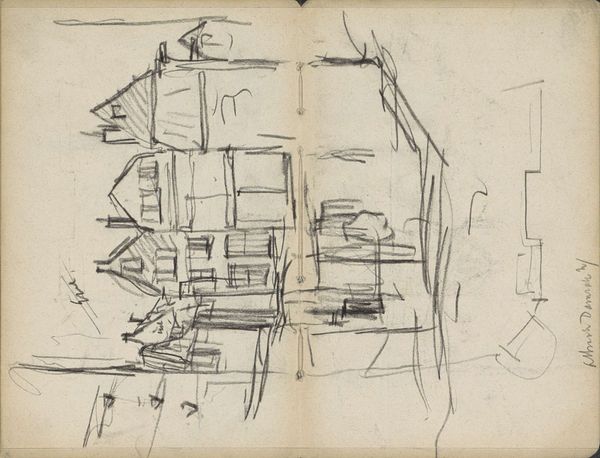
Gezicht op huizen aan de Oudezijds Kolk in Amsterdam 1896 - 1901
0:00
0:00
georgehendrikbreitner
Rijksmuseum
Copyright: Rijks Museum: Open Domain
Editor: Right now, we're looking at George Hendrik Breitner’s "Gezicht op huizen aan de Oudezijds Kolk in Amsterdam," a graphite and ink drawing on paper, made sometime between 1896 and 1901. It’s a quick sketch, very raw, almost like a snapshot. I wonder, what story do you think it tells about Amsterdam at the turn of the century? Curator: I think it speaks volumes about the democratization of art and imagery during that period. Before photography became readily available and before the rise of the illustrated press, such glimpses of everyday life weren't widely circulated. Breitner, as an Impressionist, was deeply interested in capturing fleeting moments. The sketch, in its hurried nature, suggests an immediacy, a desire to document the rapidly changing urban landscape and the social conditions within it. How does this unfiltered view of urban life challenge the idealized portraits or landscapes of the time? Editor: That's a good point! Most art back then depicted something grand or beautiful, something *worth* painting. So, Breitner sketching everyday buildings and life… it’s a bit radical, right? It's not picturesque at all, and maybe even a bit…gritty? Curator: Exactly! And that grittiness is key to understanding the social and political role of his art. By focusing on ordinary scenes, Breitner was subtly shifting the power dynamic in art. Who decides what's worthy of representation? How do institutions like the Rijksmuseum, where this sketch resides, contribute to that decision? This sketch compels us to consider whose stories were, and weren't, being told at the time. What do *you* make of the seeming lack of people, despite being a cityscape? Editor: It emphasizes the buildings, I guess, and the city as something more than just pretty scenery? Maybe even highlighting urban development? Curator: Perhaps he saw in the buildings more enduring qualities or an important social indicator, especially during a period of immense urban transformation. It challenges the traditional function of cityscapes to serve as a backdrop for human action or historical events. I’ve certainly reconsidered its function. Editor: Me too. I'll never look at a "simple" sketch the same way.
Comments
No comments
Be the first to comment and join the conversation on the ultimate creative platform.
